UK-based Wire Arc Additive Manufacturing (WAAM) specialists WAAM3D recently launched its new 3D printer, the MiniWAAM, at TCT 3Sixty 2024.
In an interview at the bustling WAAM3D booth, CEO Filomeno Martina highlighted how this new system increases the accessibility of metal 3D printing.
“The MiniWAAM combines a state-of-the-art level of performance with a very small price tag,” explained Martina. “We have always pitched the idea that metal AM should be democratic. We hope that many more people will be able to access this technology thanks to MiniWAAM.”
Designed for the production of prototype and end-use parts, the MiniWAAM is a compact WAAM system that integrates advanced capabilities such as multi-material metal 3D printing and live process monitoring. It is optimized for use in a variety of manufacturing and research environments to support production, process development, metallurgical characterization, and testing.
While WAAM3D has not yet revealed the starting price of the MiniWAAM, Martina stated that it is “substantially cheaper” than any other WAAM 3D printer on the market.
“I’m very proud of the work that the team has done to get us to this point in time to launch the machine at the show,” Martina told 3D Printing Industry. “We look forward to supporting many customers implementing WAAM into their operations thanks to MiniWAAM .”
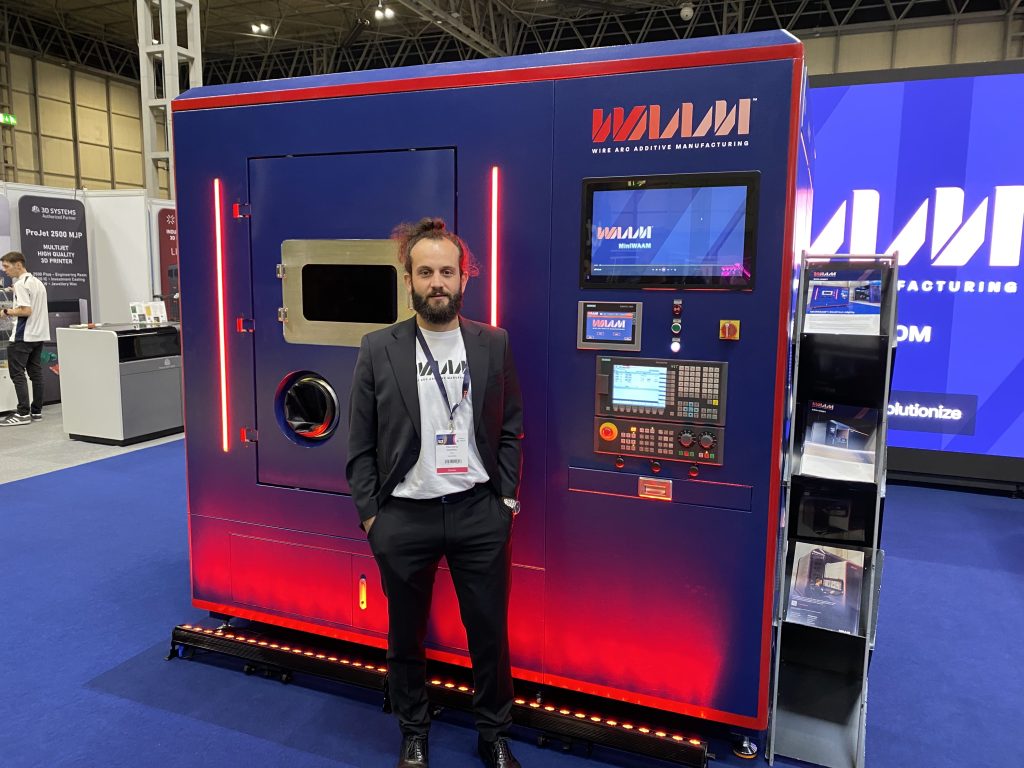
The MiniWAAM: increasing accessibility to WAAM 3D printing
Founded in 2018, WAAM3D is a Cranfield University spin-out that seeks to industrialize and commercialize the WAAM process.
The new MiniWAAM moves away from the company’s well-established large-format approach based on robotic arms. It instead leverages a 3-axis overhead CNC system and 500 mm rotational table with a 60 kg payload. With a build volume of 800 mm x 800 mm x 600 mm, this architecture significantly reduces the physical size of the 3D printer.
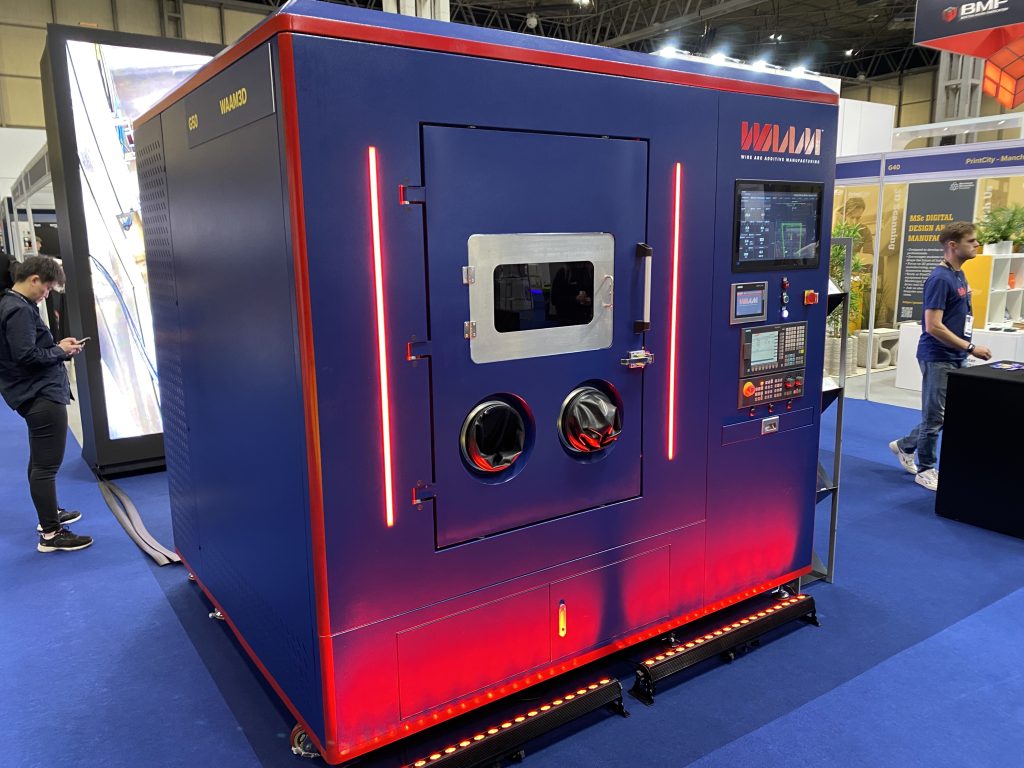
Possessing an inert chamber, atmosphere maintenance, fume extraction and filtration, the MiniWAAM enables standalone plug-and-play installation on the shop floor. According to Martina, this allows easy integration into most manufacturing workflows and reduces overhead costs.
“It is extremely compact and is only 3 tonnes in mass, so it is mobile and can be easily moved around,” added Martina. He highlighted that, despite this size reduction, the MiniWAAM retains the same 3D printing capabilities as the much bigger RoboWAAM. Martina stated that WAAM3D has taken this new approach to “meet demand in new market segments.”
The company’s larger 3D printer possesses eight axes of kinematic motion and a substantial 2 x 2 x 2 m build volume which “increases the real estate consumption and cost of the machine.” Therefore, MiniWAAM has been launched to satisfy the needs of other, non-large-format applications and allow “more people to take a step into the world of WAAM.”
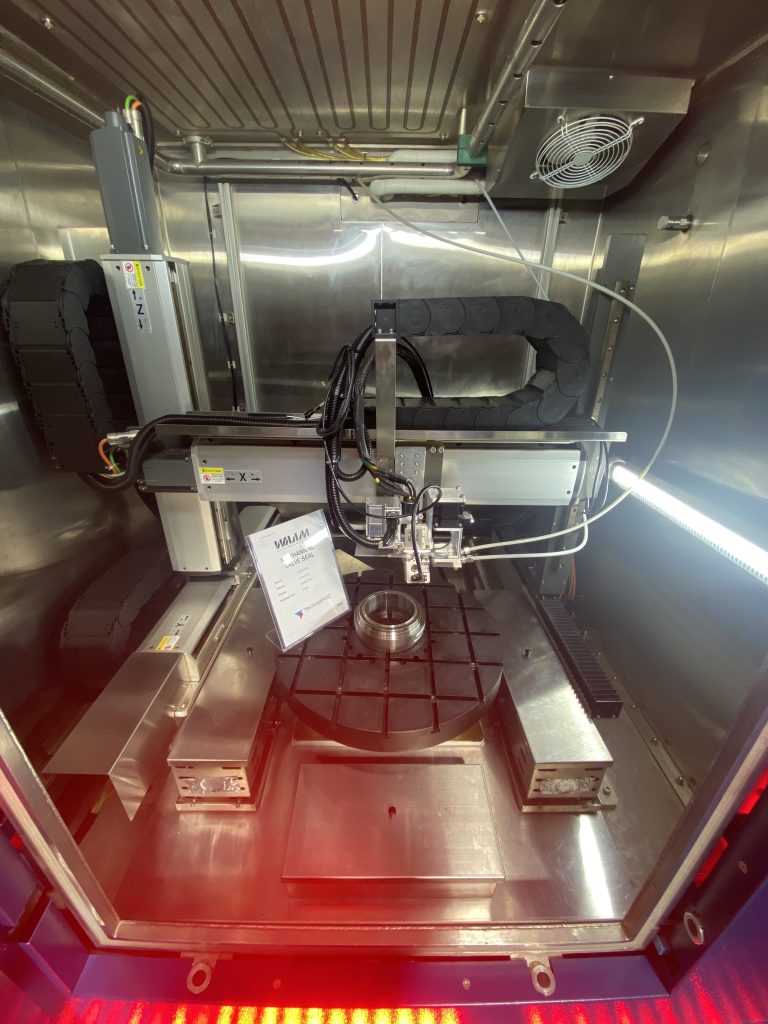
Key features and benefits of the MiniWAAM
Martina highlighted several new features which help the MiniWAAM stand out within the WAAM 3D printer market. Notably, the system incorporates two wire feeders which can be independently controlled. This allows users to combine two materials to fabricate functionally-graded, multi-material parts.
Martina explained that mixing materials at a controlled rate in the melt pool can also create new alloys that are not available in the form of a single wire. He added that this is much more precise than using metal powders in processes such as LPBF as “you know exactly how much wire you’re melting at any point in time.” One multi-material structure on display combined 316L and Nickel Aluminum Bronze wire feedstock.
Additionally, two wires of the same alloy can be 3D printed simultaneously to increase deposition speed and productivity. This reportedly allows the 3D printer to take on “proper production work” of end-user parts.
Martina demonstrated additional metal parts 3D printed on the MiniWAAM, including an aerospace frame and titanium cone section made from Ti-6AI-4V. The new 3D printer enabled notable time and cost savings for these parts, with the latter saving 95% on cost and 40% on material.
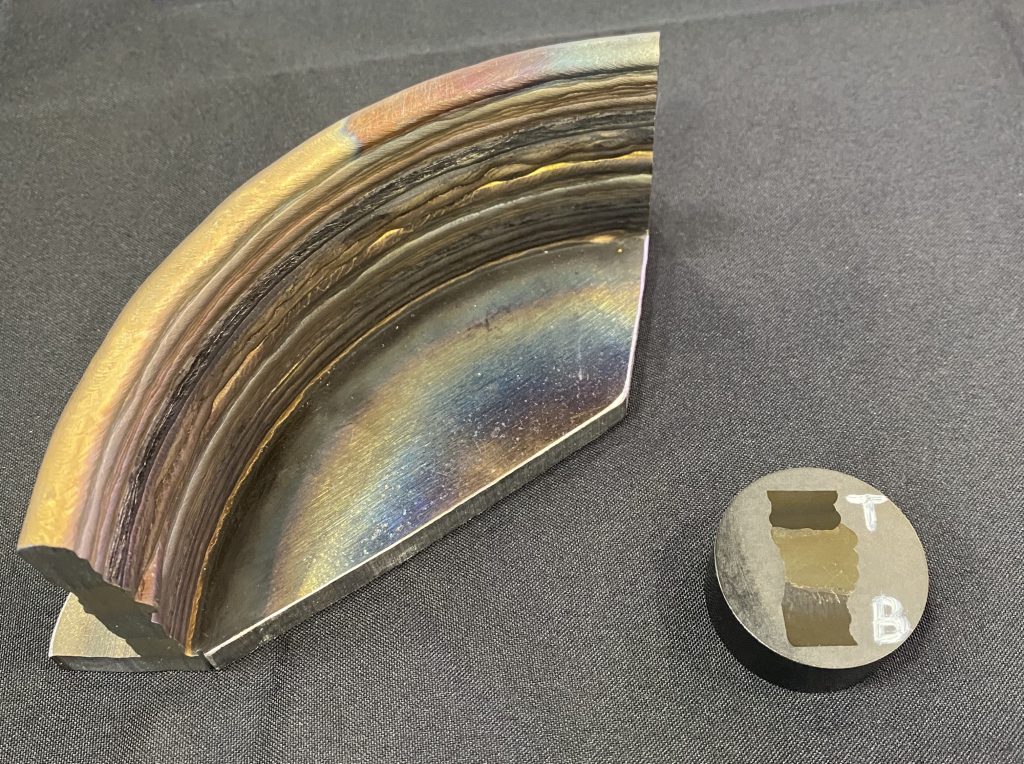
WAAM3D’s proprietary ShapeTech capability is also included with the MiniWAAM. A staple of the RoboWAAM system, ShapeTech utilizes an interferometric sensor to extract geometric and layer height data during the 3D printing process.
This information is automatically uploaded to the company’s WAAMCtrl software, which Martina calls “the brain of the machine.” Here, users can monitor deposition consistency and geometric targets, removing the need for lengthy laser scans or touch-probe quality checks.
Electronic wire positioning is included to increase process stability, while an in-built process camera enables remote melt-pool imaging. Essential WAAM monitoring of voltage, current, travel speed, and wire feed speed is also included. These features, along with double-point temperature measurement capability, ensure consistent 3D printing conditions and deposition results.
What’s more, automatic purging, atmosphere maintenance, and evacuation cycles enable global argon shielding is included to guarantee the quality of 3D printed parts.
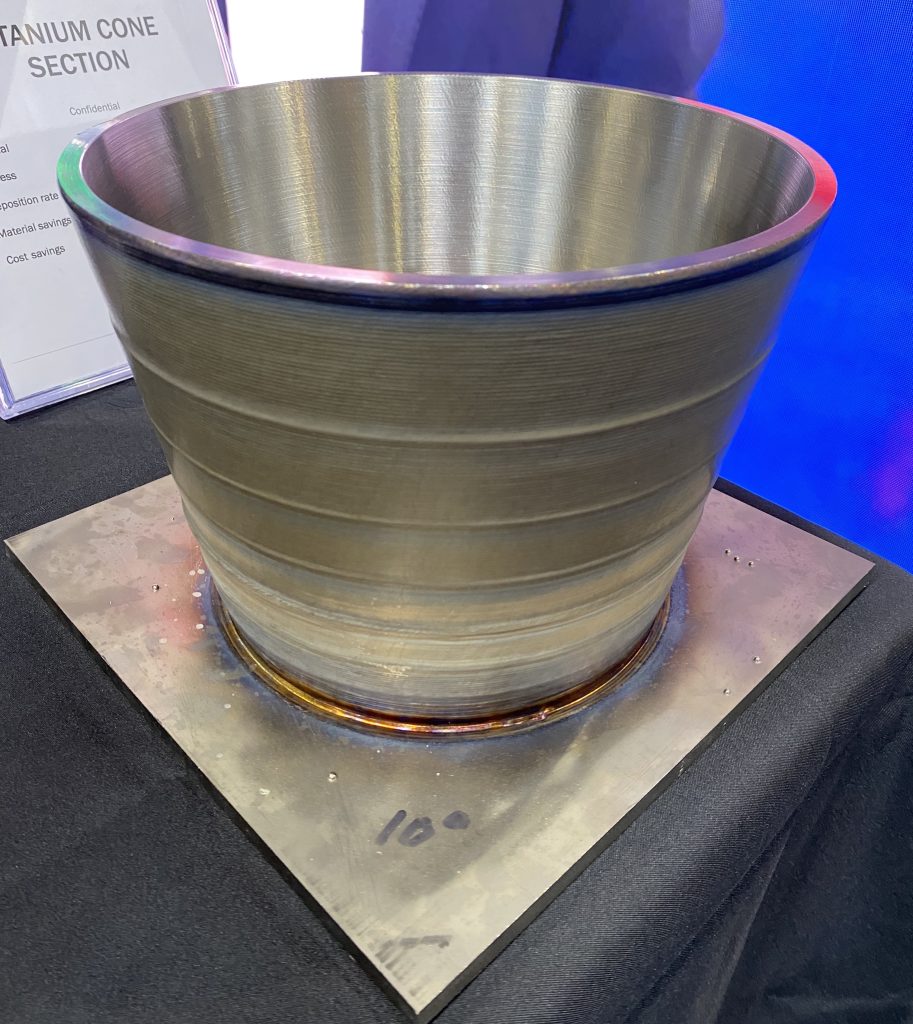
Technical specifications of the MiniWAAM
| WAAM Variant | Plasma Transferred Arc |
| Materials | Titanium alloys, Stainless steel, Nickel alloys, and others |
| Machine Size | L2400 x W2100 x H2300 mm3 |
| Inner Chamber Size | L1600 x W1500 x H1600 mm3 |
| Axes | 3 Cartesian (overhead) + 1 Rotational |
| Rotational Table | 60kg; 500 mm Diameter |
| Atmosphere Purity | <50 ppm O2 |
| Accuracy/Repeatability | ± 0.1 mm |
| Straightness Tolerance | ± 0.5 mm |
| Flatness Tolerance | ± 0.5 mm |
| Travel Speed | 1 mm/s to 40 mm/s |
| Control System | Siemens PLC |
Want to help select the winners of the 2024 3D Printing Industry Awards? Join the Expert Committee today.
What does the future of 3D printing hold?
What near-term 3D printing trends have been highlighted by industry experts?
Subscribe to the 3D Printing Industry newsletter to keep up to date with the latest 3D printing news.
You can also follow us on Twitter, like our Facebook page, and subscribe to the 3D Printing Industry Youtube channel to access more exclusive content.
Featured image shows Filomeno Martina, WAAM3D CEO, with the new MiniWAAM 3D printer at TCT3Sixty 2024. Photo by 3D Printing Industry.


